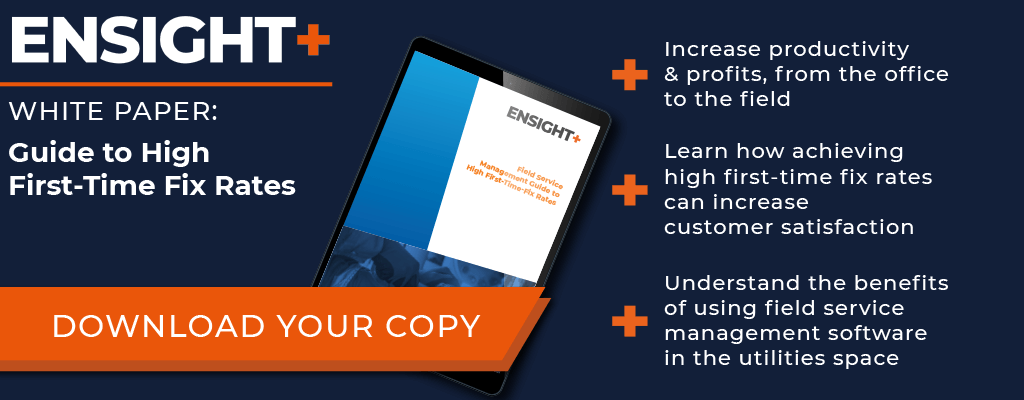In 2015, U.S. utility companies spent over $100 billion on capital expenditures. The majority of those resources went specifically to investments in the grid. These companies poured money into assets and infrastructure, energy generation and distribution, and the slew of cutting-edge hardware and software. What’s more, utilities were projected to spend roughly the same amount annually through 2018. These numbers tell us that utility and energy companies are investing a tremendous amount of resources into overhauling their grids. Including the internet of things (IoT), distribution automation, analytics, transmission technologies, and consumer-level features.
Utility organizations need to develop a business model that is pliant and responsive enough to accommodate all technological innovations without losing their efficiency. Also, not losing their competitive edge in the process. Here are two critical ways companies can cultivate flexibility within their organization that will enable them to evolve in lockstep with the breakneck pace of their industry.
Strategic Planning for Prosumers and DER
Prosumers are energy consumers that are also producing their own power through rooftop solar panels, wind turbines, microgrid systems, and geothermal sources. Prosumers—which are also referred to as distributed energy resources, or DER—are a growing contingent of the U.S. population. By 2020, the number of gigawatts of rooftop solar power in the nation is expected to triple from 2015 figures. Utilities need to start developing a business model that recognizes prosumers and their growing influence on energy production and distribution.
These early stages of what may eventually galvanize into a prosumer revolution are an ideal time for utility companies to pivot. Smart, future-minded firms will start developing relationships with prosumers. They’ll learn how to coexist with microgrids and harness the power of DERs rather than fearing them as rivals. Utility heads should start thinking strategically about how they can thrive alongside a nation of consumers that will continue to grow their DERs and rely less on the monopolistic relationships that public utilities have long enjoyed. A recent BCG report found that companies that adopt a proactive transformation create seven times the value of those that depend on defensive transformations. Firms can initiate proactive transformations by brainstorming and blueprinting potential routes to partnerships and collaboration with the growing prosumers and DERs in the country.
Move Toward a Customer-Focused Model
Smart, future-minded firms will start developing relationships with prosumers. They’ll learn how to coexist with microgrids and harness the power of DERs rather than fearing them as rivals. Utility heads should start thinking strategically about how they can thrive alongside a nation of consumers that will continue to grow their DERs and rely less on the monopolistic relationships that public utilities have long enjoyed.
Whether it’s a desire to harness renewable energies, embrace DER, or better grasp when they’re using energy, consumers are driving the disruption and upheaval in the utility industry. That means that in order to retain their customer base, utility companies need to start shifting their focus toward customer interests and preferences. This type of strategic initiative is referred to in different ways. Including investing in customer experience (CX) and moving to a more customer-centric business model.
There are several ways that utilities can become more customer-focused. The first is by increasing their transparency and showing their customers more of what they’re paying for. Companies can use digital platforms and analytics to provide consumers with in-depth energy usage reports. These can include value-added services (VAS) like suggestions for ways to curb energy use and decrease monthly bills.
Another way to start bolstering customer experience is by giving consumers the ability to customize their energy. Some examples of alternative energy options include utilities selling energy from wind and solar farms. Leasing out DER equipment, and managing community microgrids are also an idea. In each of these examples, public utilities are giving customers the opportunity to be active, conscious consumers. Also ensuring that the energy freedom and multitude of options burgeoning today do not reduce their profits and long-term viability.

Conclusion
Building a digital presence and platforms and expanding energy customization are not mutually exclusive, either. Utility companies that establish strong relationships with customers will have a better sense of what energy models they are looking for. Meanwhile, companies that build an energy portfolio that maximizes customizability will be able to put forth a digital presence. Showcasing is a customer-centric company that boasts an impressive array of options. Committing your operation around up-and-coming customer preferences is the type of business model that will thrive.
The days of static, stagnant utility companies are over. In an era where data volume, energy sources, and customer preferences are all rapidly transforming, utilities need to stay flexible. Accommodating changes that come fast and loose. Top-level field service management (FSM) software can help companies tighten their business models and ramp up their customer experience so that they’re better able to respond to the turbulent pace of technological innovation in their industry.



